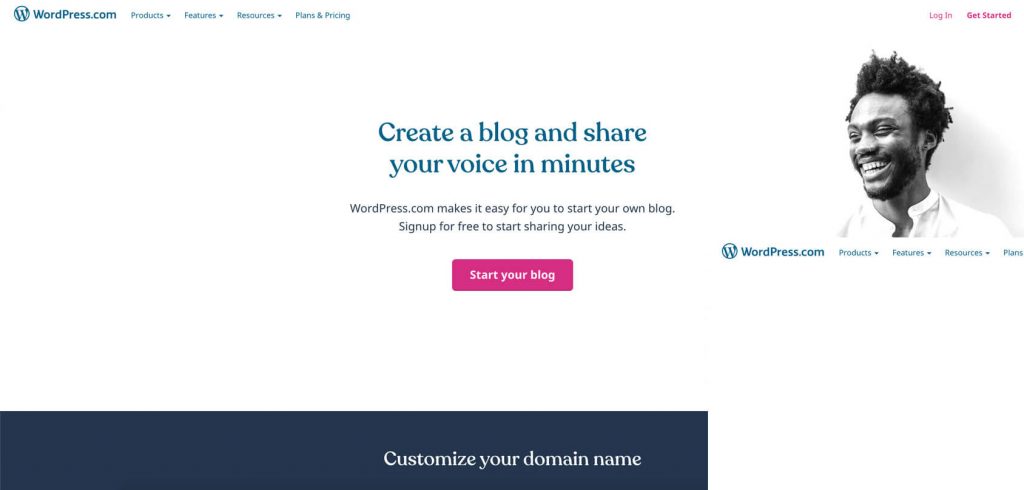Looking for some free blog sites to help you start sharing your writing with the world? Whether you just want to share updates with your family and friends or you want to start a blog and build a broader audience, we’ve put together ten great sites where you can start a blog for free.
We’ll also try to steer you towards the specific platform that’s best for you so that you can easily create a blog for free. Here’s what you need to know:
Best free blog sites to consider in 2021
Here are the best free blogging sites you can use to start your own blog today:
1. Wix (www.wix.com)
The nice thing about Wix is that it has free hosting included, so you just need to arrange the layouts, pick a template, and you’re all set. It provides a nice collection of free and premium themes and templates for different purposes, including blogging.
To launch a Wix blog, just sign up and make a choice: you can either let the Wix ADI create a site for you based on a questionnaire or build your blog yourself – which includes selecting a template and arranging the layouts via the WYSIWYG editor. If you go with the second option, all you need to do is to find a beautiful template and start customizing everything on the front-end, in a live preview mode.
You can add multiple elements to your pages, from multimedia widgets to backgrounds, menus, typography, forms, video boxes etc. When you think the site is ready, click Publish and start blogging your stories. After publishing, you can return anytime to edit the content blocks.
👉 Read more about the differences between Wix and WordPress and see some great Wix website examples.
2. WordPress (www.wordpress.org)
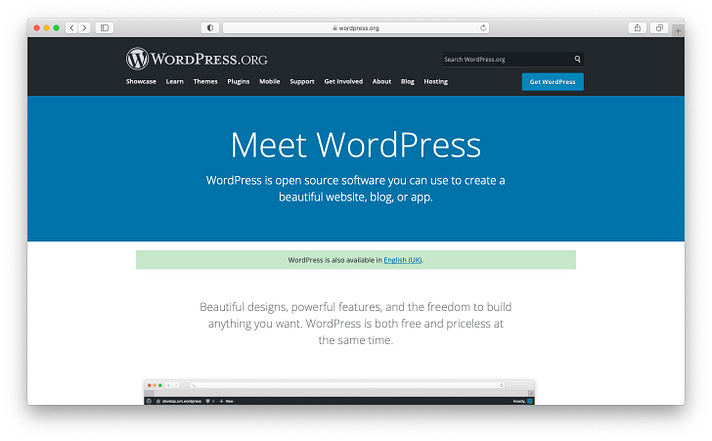
WordPress.org is the king of free blogging sites. It is a free platform, but you need to build the site mostly by yourself afterward. You also have to host the software yourself. While you can find some free WordPress hosting, a better long-term strategy is to pay a moderate amount for a solid WordPress host.
This is where Bluehost comes into play. Not only is it very cheap (the Basic plan starts at just $2.75 per month when you sign up for three years), but it also provides solid features, including a free domain name, 50GB of disk space, unmetered bandwidth, free SSL, and 100MB of email storage per account. At this very moment, Bluehost is the cheapest sensible WordPress hosting you can find out there.
Because you’re hosting the WordPress software yourself, you have full control over how your site looks and functions, as well as how you make money from your site. But the flip side is that the setup process is a little bit more hands-on.
Here’s what the WordPress interface looks like when creating a new post:
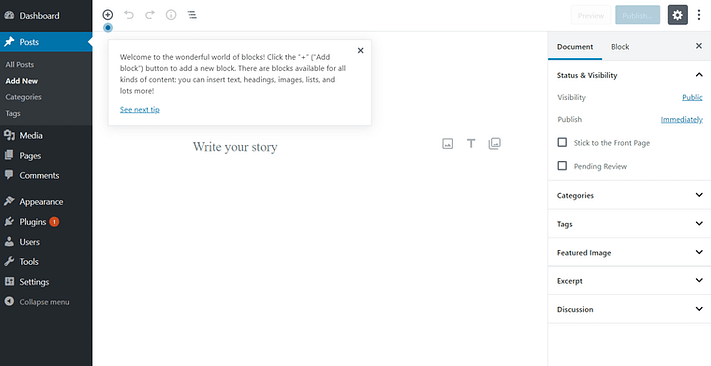
On the opposite side, there’s WordPress.com, which is the other face of WordPress – a platform used mostly for personal blogs because it’s easy to set up and free (if you’re okay not having a custom domain name). However, you’re also quite limited in the way you can customize the site.
And especially if your plan is to monetize your blog in any way, the free WordPress.com version will prevent you from doing that.
Considering this, we recommend you to get started with Bluehost. There is a 30-day money-back guarantee in place – in case you change your mind with the whole blogging experiment, just ask for a refund.
👉 Read this for more on the difference between WordPress.com and WordPress.org.
3. LinkedIn (www.linkedin.com)
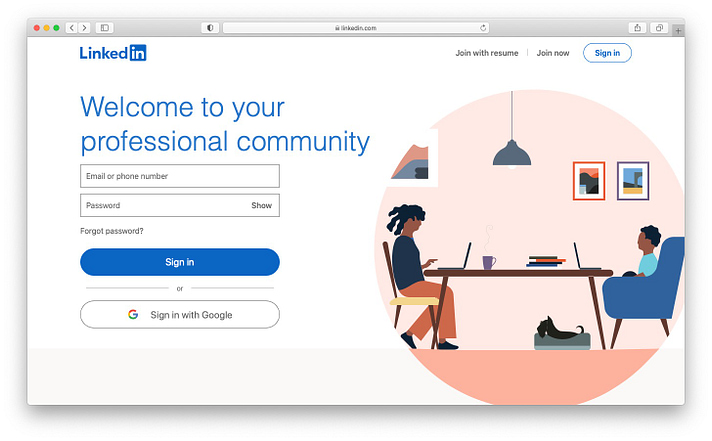
You probably didn’t see this one coming. LinkedIn isn’t most people’s first choice when considering which of the free blogging sites to choose. That being said, it really does deserve some attention!
Two main reasons for this: easy to use tools, and pre-existing audience.
About that second thing – the audience – what’s great about LinkedIn’s user base is that those are highly focused users, professionals and business owners. In fact, it’s reported that more than 30 million businesses are active on LinkedIn. And they’re not just there for the sake of it. Other data indicates that 94% of B2B marketers use the platform as one of their primary lead sources.
In short, LinkedIn just works as a platform where you can get exposure, and this makes it one of the best free blogging sites of them all.
From a technical point of view, publishing on LinkedIn is easy. Just go to your LinkedIn feed and use the “Start a post” widget at the top of the page. To convert your status into a full post, click on “Write an article on LinkedIn” to open the full-screen editing window.
This is where you can find all the editing tools that you’re used to – for text formatting, adding images, and more.
If you want to learn more about how blogging on LinkedIn works, read this in-depth guide.
4. Weebly (www.weebly.com)
Weebly is another website builder that you can use not only to blog but also to sell products or showcase your portfolio. It is somewhat similar to Wix to the extent that it provides a WYSIWYG editor with drag-and-drop elements. If you want to add a certain button, you can simply drag it to the page and customize it. The same happens with photo galleries, slideshows, and any other multimedia element.
Weebly provides sidebars, media boxes, forms, ad spaces, social media icons, newsletter subscription, and many more. Moreover, the platform comes with built-in analytics and lets you use your own customized domain (for which you need to pay).
On the free plan, you get five custom pages, a Weebly subdomain, 500MB storage, and ad spaces.
5. Medium (www.medium.com)

Medium is a multipurpose platform tackling diverse topics, where anyone with an account can write. Unlike most other free blogging sites, the big advantage of Medium is that your articles will be exposed to a wide audience since the platform is visited by 60 million readers (*) per month (and the number increases every year).
It’s super simple to use – you pretty much just sign up and start writing. But the downside is that all your content is on Medium. That is, you’re not really building your own “space” like you would with WordPress. Read this post for more on the differences between WordPress and Medium.
6. Ghost (www.ghost.org)
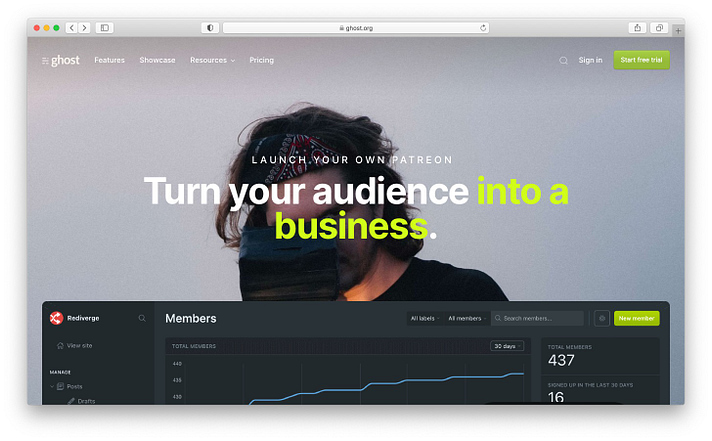
This is another WordPress-like blogging platform. While the Ghost software can be downloaded for free, you need paid hosting for fuel. DigitalOcean is a great service that supports Ghost: it is cheap and comes with a bunch of nice features to get you started.
The downside is that installing Ghost isn’t as straightforward as WordPress, and you might have to get your hands dirty with some server work – depending on the host you choose for your blog.
To create a post in Ghost is easy once you set up your website. The editor is simple and minimalist, and it offers a live preview of your text on the right side of the screen. On the front-end, you get a Medium vibe, so it’s nice. Near the editor screen, there is a sidebar with settings, where you can choose your preferences.
7. Blogger (www.blogger.com)
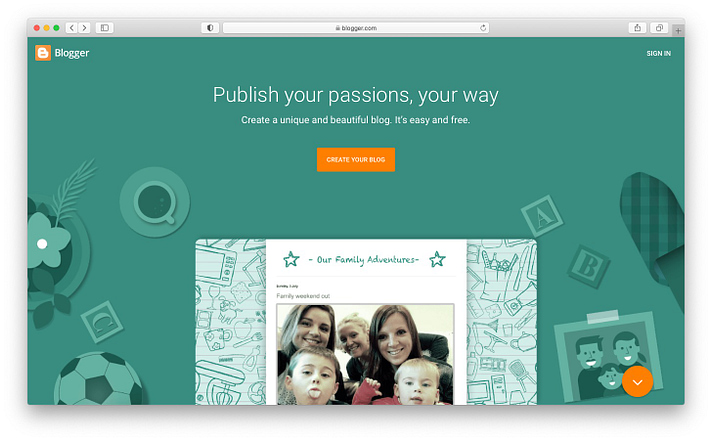
Blogger is one of the oldest free blog sites, though its popularity has dipped in recent years.
It’s a solid solution for personal blogs, but it’s not the best resource for professional use. It works just like the other hosted platforms: you need to create an account first in order to use it. After you create it (which is simple), you have to pick one of the default themes and you can start writing your thoughts down. This platform has an interface similar to a Google+ profile and the editor looks like a Word page.
Blogger delivers a bunch of themes to choose from, each providing different skins, advanced color filtering, and various minimalist gadgets (aka widgets). But nothing too fancy or any advanced design customization. In general, Blogger has simple appearance options, so the focus stays more on the writing part. A nice part about this site is that it comes with ad spaces that you can place within your content pieces.
8. Tumblr (www.tumblr.com)
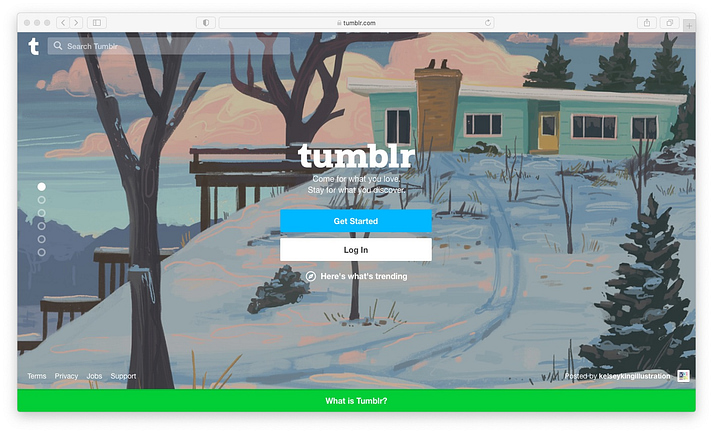
Tumblr is one of the original free blogging sites on the web. It’s just a bit ‘milder’ than the others on the list. Unlike the rest of the platforms that are mostly created for publishing purposes, this one here is more oriented to multimedia or social media-like content. The interface of Tumblr is more playful and is easy to get started with – you can simply sign up and then you’re allowed to start posting.
Just like a regular blogging platform, it provides multiple post formats for different types of content. The thing with Tumblr is that it is purely for personal use and wouldn’t put up a great solution if you have business-oriented plans. It is simplistic, offers basic customization options and, like I said earlier, has more of a social media vibe.
Despite not being built for business, it does let you display ads on your page, use affiliate links, and integrate your blog with Google Analytics.
9. Joomla (www.joomla.org)
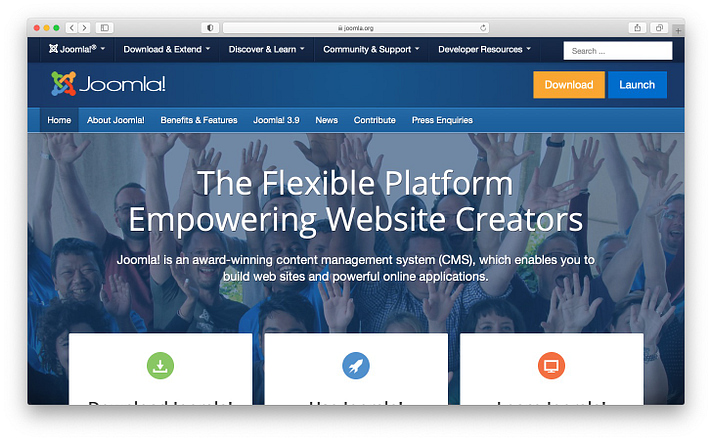
Joomla is similar to WordPress.org but not as obvious when considering the free blog sites available out there. Just like WordPress, the software is free but needs hosting and a domain. As in the WordPress case, we recommend Bluehost because it is both very cheap and reliable (and it includes a free domain).
In general, Joomla has a flexible interface that can be used not only for blogs but also for more complex websites (you can choose from a variety of templates and extensions to add custom functionality).
When it comes to the ease of use, the platform provides an old-school editor, that somehow looks like Microsoft Word. It allows you to choose the font, color, size, emoticons, tables, or background. I mean, the tools in the menu make you feel like you’re in a Word window.
The Joomla editor is tabbed. The first tab is the classic texting window per se, then you need to switch tabs to select the post categories, tags, date, meta description, keywords etc.
10. Jimdo (www.jimdo.com)
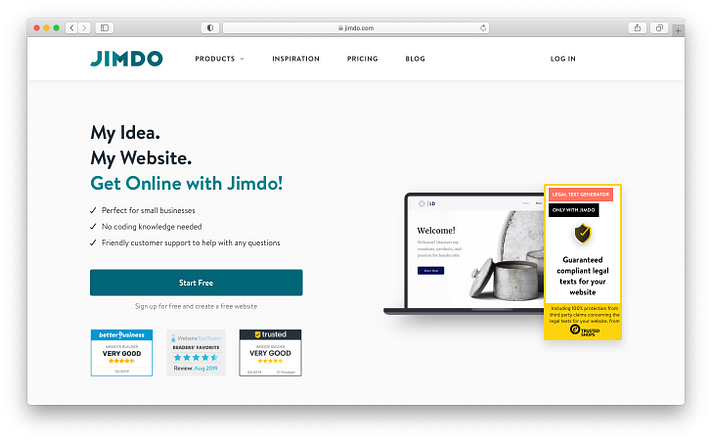
Jimdo is more than just an example of free blogging sites. However, in its free version, blogs are the most recommended, given Jimdo’s basic features. So you can quickly create a website with Jimdo by going through a few items (you take a basic questionnaire about your site’s purpose). After you check these options, your site is automatically created based on your picks. The downside of Jimdo is that you can’t have a custom domain (at least not for free) and you can’t remove the ads unless you upgrade.
An important aspect of Jimdo, though, is that it is a page builder: you create blog posts right via the front-end and not via an editor (like the other blogs do). This means that you need to go to every content box on a live page and edit it on the spot, without being redirected to another page. The footer and the logo can be edited the same way. When it comes to the content elements, you have a few options: simple text, text with image, photo gallery, columns, buttons etc.
Via the left sidebar, you can make more tweaks, such as adding the post’s date, title, category, status (published or draft), summary, and image preview. In short, your article will be entirely built from many individual elements that you will edit separately. Text, picture, button… the order is up to you.
How to create a blog (in 6 easy steps)
- ✅ Pick a descriptive name for your blog. Use Domain Wheel to find the perfect domain name for your blog.
- ✅ Buy a domain and get hosting for your blog. We recommend buying hosting from Bluehost (from $2.75/month) and getting your domain name free of charge.
- ✅ Install WordPress. You can install WordPress via the Bluehost interface with a few quick clicks.
- ✅ Find the perfect WordPress theme or template. Personalize the design of your blog to match your taste.
- ✅ Get some must-have WordPress plugins and add-ons. Give your blog more features like social sharing and image optimization.
- ✅ Launch your blog and start sharing your voice with the world. Start writing, sharing and engaging with your followers on your favorite subject.
Here’s a video walk-through of the steps required to start your own blog on WordPress. You can treat it as a summary of what’s been said above.
Ready to launch a blog with these free blog sites?
What do you think? Which one sounds like the best solution for you?
Also, if you used any of these free blog sites in the past, we would like to hear about your experiences. Submit a comment below.
Your WordPress Site
Reduce your loading time by even 50-80%
just by following simple tips.
Download free guide
* This post contains affiliate links, which means that if you click on one of the product links and then purchase the product, we’ll receive a small fee. No worries though, you’ll still pay the standard amount so there’s no cost on your part.
Are you planning to start a blog but not sure which blogging site to use?
You are not alone. In fact, the most common question I get asked is – What is the best blogging platform for beginners?
When I started blogging in 2010, I wondered the same thing.
Hi there, my name is Artem.
In this guide, I’ll share with you all of the available sites for blogging and give you recommendations based on my hands-on experience working with blogs for the last eight years.
Also, our team has done several surveys and collected blogosphere stats to find the most popular free blogging sites (and premium blogging platforms) on the web.
P.S. If you have any questions, feel free to contact us for any assistance.
Disclosure: FirstSiteGuide is supported by our readers. When you purchase through links on our site (i.e. WordPress.com blogging platform), we may earn an affiliate commission and it comes at no extra cost for you. We test and try all the products that we recommend.
Don’t have time to read this article? Below are the best blogging platforms and software picks for 2021.
EDITORS’ CHOICE
 WordPress.com | The best freemium platform for beginners to try and test WordPress CMS. | Visit WordPress.com Read review |
 WordPress.org | The best open-source platform built for people who are serious about blogging. | Visit WordPress.org Read review |
 Medium.com | The best platform to share content with a huge community of readers. | Visit Medium.com |
Whether you want to build a blog for hobby blogging or you would like to find the best blogging software to make money and grow your blog as a business, finding the right blog site is imperative for your blog’s success.
Several top blogging platforms offer a range of capabilities – and one is bound to suit your needs.
The 10 best blogging sites and platforms
Let’s take a look at some of the best blog sites available on the web today and how they compare against each other.
- WordPress.com Best free blogging platform
- WordPress.org Best platform for serious bloggers
- Medium.com Simple platform for writing
- Blogger.com Publishing platform by Google
- Tumblr.com Best microblogging site
- Wix.com Best blog website builder for beginners
- Ghost.org Best WordPress alternative
- Postach.io Blogging powered by Evernote
- Weebly.com Plain drag and drop builder functions
- Typepad.com Best for businesses and journalists
If you are a beginner, you will want a platform that is easy to set up and easy to use (requires no coding skills). I’ll explain what each blogging platform has to offer, by highlighting their key features and showing their pricing plans.
WordPress.com — Best free blogging platform
WordPress.com is a hosted version of the open-source platform WordPress.org. It is a commercial project that offers a free trial plan with upgrades for premium plans and custom domains.
According to our survey, it’s one of the most popular hosted blogging platforms out there. If you are an absolute beginner with no technical knowledge, but you want to build your blogging site, WordPress.com is the perfect site for you.
I recommend this software to all new bloggers as a good starting point.
The online publishing software is free to use (but your domain name will be formed as a subdomain and look like this – yourblogname.wordpress.com), and you can test it out after you create an account on the WordPress.com site.
This gives you a unique opportunity to try the best blogging platform and blog for free before you decide to upgrade to premium plans. With the upgrade, you will be able to set up a domain and use the advanced features.
The WordPress site often rolls out new features and updates to continually enhance the user experience.
Key features
- Custom domains – free domain for one year, available for paid plans on WordPress.com.
- Get traffic stats – determine what your visitors find engaging.
- Create media galleries – integrate images and videos with the drag & drop option.
- Social media integration – share your posts on social platforms automatically.
- Comprehensive SEO tools – help your readers find you easily.
- Variety of personalized themes – with new themes being added every week.
- Mobile-responsive blog sites – select from several mobile-responsive themes.
Plans and pricing
WordPress.com comes with the following plans – Free, Personal, Premium, Business, and eCommerce:
Free plan
- Free of charge
Free of charge, use with limited features and subdomain only.
Personal plan
- $4.00 per month
1-year plan billed as one payment of $48.00
Comes with a domain name, and access to email and live chat support.
Premium plan
- $8.00 per month
1-year plan billed as one payment of $96.00
Comes with advanced design tools, custom CSS, and Google Analytics support.
Business plan
- $25.00 per month
1-year plan billed as one payment of $300.00
Power your small business website with custom plugins and themes, 200GB space storage, and 24/7 live chat.
eCommerce plan
- $45.00 per month
1-year plan billed as one payment of $540.00
Best for online stores, powerful and flexible plan that lets you grow easily.
WordPress.org — Best platform for serious bloggers
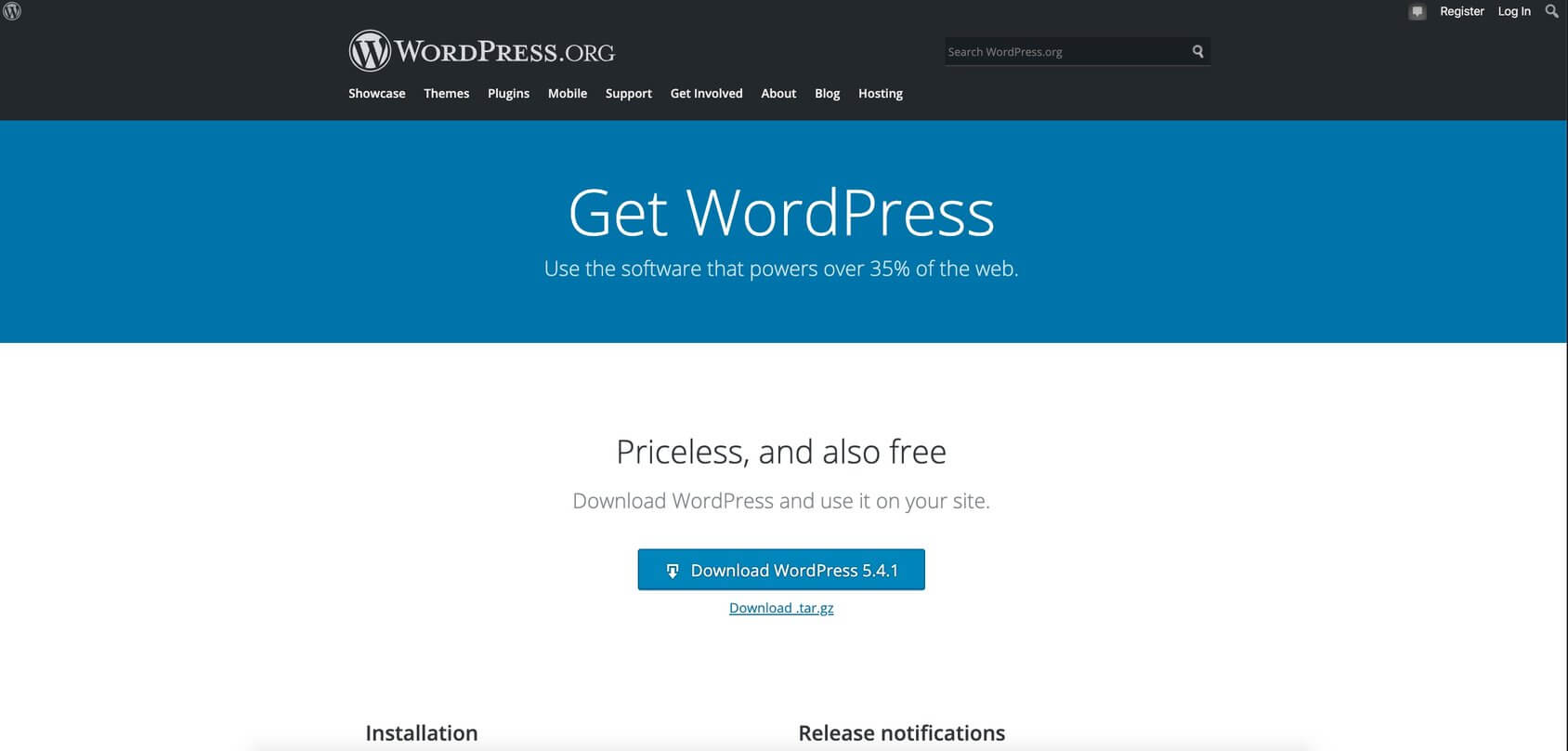
WordPress.org is free software (blogging platform) that combines simplicity with powerful features.
We used this CMS (content management system) to build our website, FirstSiteGuide.com.
We also recommend it as a preferred platform to create a blog for all serious bloggers in our – How to start a blog guide.
This tool enables you to start a blog website from scratch in a matter of minutes.
Many popular bloggers (Tim Ferriss, John Lee Dumas, Pat Flynn, and more) use this platform to create highly functional and profitable blogs. It is easy to set up – all you need to do is select a reliable WordPress hosting provider, install WordPress software, and explore the wealth of features that come with it. You get to build your blog just the way you want to, by using pre-designed free themes. There are templates that you can pick based on your preferred layout, look and feel, and color scheme.
The WordPress platform also comes with a powerful administration area (Dashboard) for maintenance, easy-to-use content publishing, and an overview of what’s happening on your blog.
WordPress.org has a large community of experts who provide tutorials that help newbies. Here, at FirstSiteGuide, we also cover various WordPress topics. You can check out our Learn WordPress section to level up your skills and understand the best practices.
Key features
- Reliable and secure – keeps data safe from malware.
- Mobile-responsive websites and blogs – pick from many mobile-friendly themes.
- Free themes – select a customized theme from hundreds of options in the theme WordPress theme directory.
- More than 55,000 plugins – access plugin directory to find ways to enhance your WordPress site.
- SEO tools – install Search Engine Optimization plugins that help you rank high in search engines.
- Simple publishing process – create content, integrate media, and make it live with a single click.
Plans and pricing
WordPress.org is an open-source (free) tool you can use to create a beautiful website or blog.
Free
- Free software
Open-source blogging platform. Your expenses will be a domain name and web hosting services of your choice.
To build a blog with WordPress.org, you will need a web hosting space and a custom domain name. For new bloggers, I recommend Bluehost, a company that powers over 2 million websites worldwide.
I was able to negotiate a special deal only for my visitors, that includes:
- Free domain name
- The 30-day money-back guarantee period
- Discount price of $2.75 per month
→ Claim an Exclusive 67% Bluehost Discount Offer ←
Medium.com — Simple platform for writing

Medium is different from the rest of the free blogging sites. It offers a no-frills approach to content publishing as it allows bloggers to write what they are passionate about without having to worry about coding, design, domain, or other issues.
You can also use it as an additional channel to share your content; for example, you can repurpose content from your existing blog post created on other blogging platforms such as WordPress and post it on Medium. That’s how most professional bloggers use it.
You can post stories for the vast community of readers that visit Medium and get appreciation and feedback from them. It is also possible to connect with avid readers who are willing to pay for quality content through the Medium Partner Program. This way, you can monetize your blog posts while sharing your ideas and opinions with the world.
To start blogging with Medium, sign up, and share your content with the editorial team who analyze them according to their standards. If you create quality content that follows their guidelines you can start earning money by attracting subscribers.
Key features
- Vast audience – convert millions of site readers into your subscribers.
- A free app – access Medium on your mobile devices from anywhere.
- Monetization – earn money when someone reads your content.
- Social media integration – share your content on social networks.
- Media embeds – integrate various forms of media files.
Plans and pricing
Medium started as a free platform for publishers but recently started to offer membership subscriptions.
Free
- Post your own stories
Free to use, you can post your own stories. Plus, you get access to unlimited public stories and 3 per month exclusive stories.
Membership
- $5.00 per month
or $50.00 per year
With the membership, you can subscribe for unlimited access to the smartest writers and biggest ideas on Medium.
Blogger.com — Publishing platform by Google
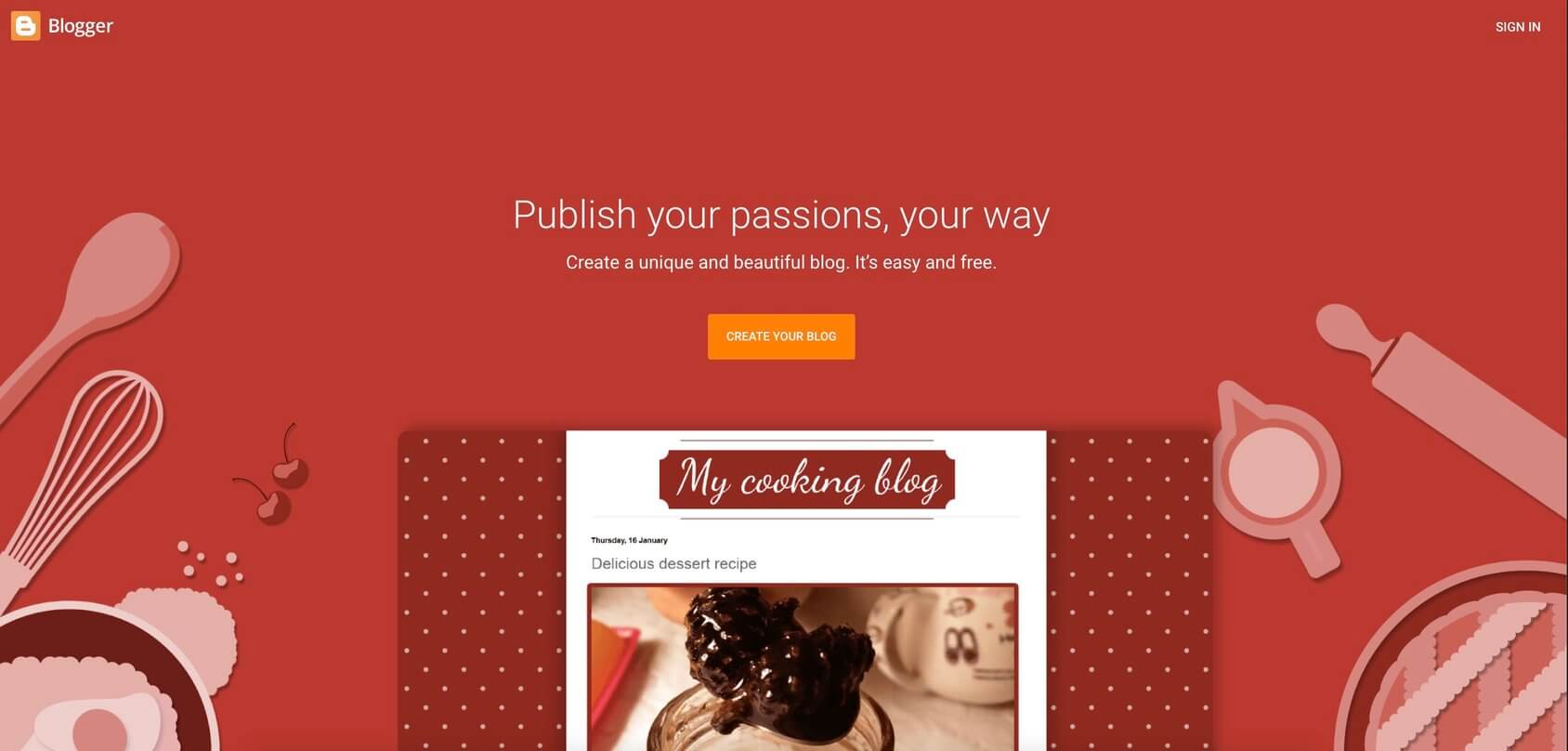
Blogger is one of the best free blogging platforms that offer a secure and reliable way to create a blog.
This hosted blog platform was launched in 1999 and later acquired by Google. You don’t need a hosting provider to start using it. All you need to do is log in using a Google account – you’ll be asked to follow the simple guidelines provided on the Blogger to make a blog for free. There’s no need for technical knowledge or coding experience as the site is quite intuitive in design and setup. It remains a widely used solution; however, I see more people moving away from it. The good news is that the platform is free, and you can test it without any commitment. Let’s take a look at some pros and cons of this blog site.
Key features
- Free or custom domain – free subdomain via blogspot.com or buy your own domain name.
- Easy to use templates – focus on the design of your blog using flexible layouts and background images.
- Featured ads – monetize by integrating with Google AdSense.
- Analytics – assess your blog’s traffic and see the content getting the most visits.
- Secure storage – store your media files with Google.
Plans and pricing
The good news is that it’s free, and you can test it without any commitment.
Free plan
- Free to use
as a subdomain blogspot.com
You can connect a custom domain name to your blog, by buying and setting it up.
Tumblr.com — The best microblogging site
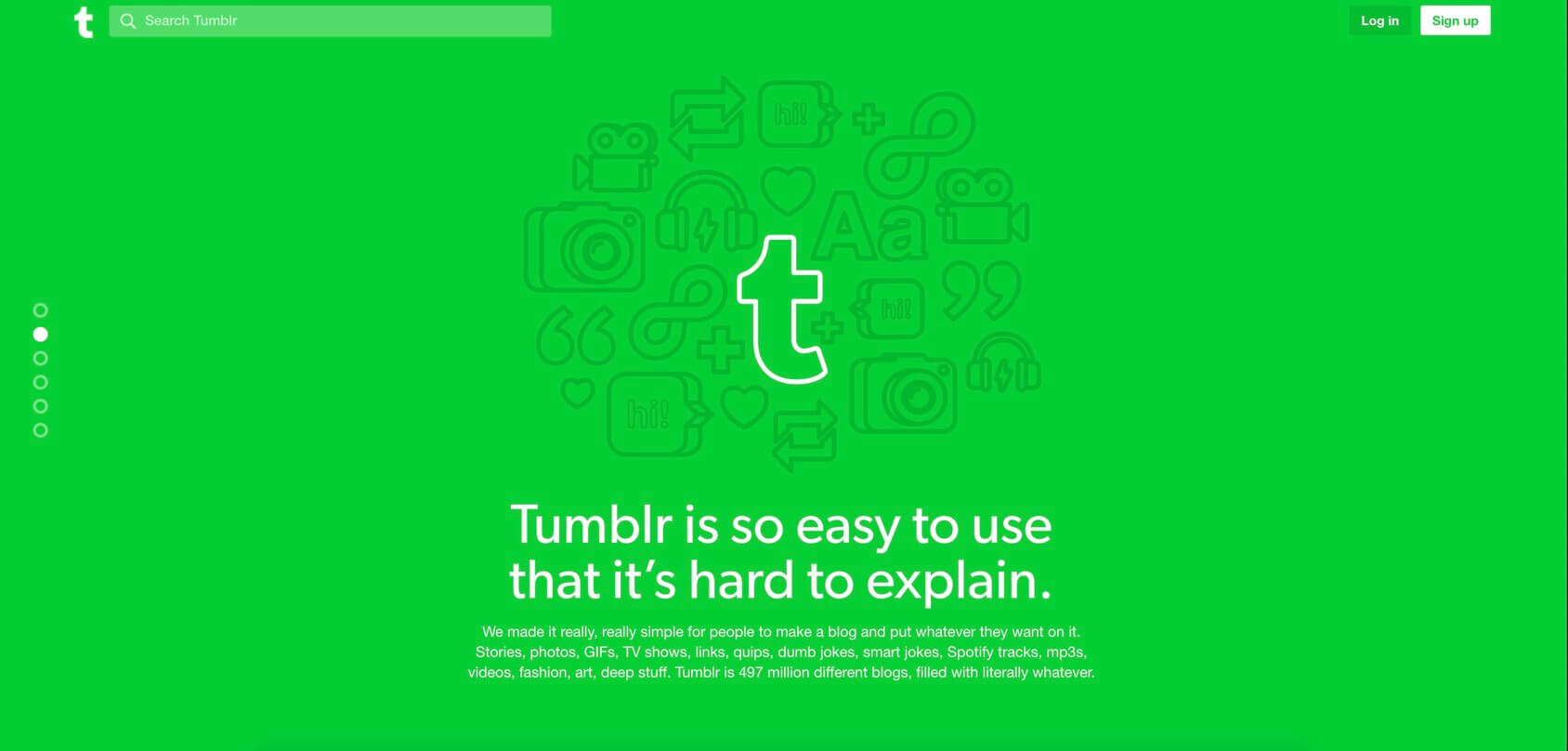
Founded in 2007, Tumblr is a microblogging platform and social media website joined together. Tumblr’s main focus is on multimedia and short-form content. If you are a writer and planning to write longer-form content, I wouldn’t recommend starting with Tumblr. It’s often used as a social network site because you can integrate a variety of media files such as photos, videos, and audio files You can also embellish your blog with GIFS, stickers, and some text. Users have the option of designing their Tumblr page with customizable themes, fonts, layouts, and many other design options.
Tumblr is ideal for bloggers who have a heightened focus on visual content. It is a global site that is visited by millions of people every day who repost their favorite blog posts and initiate conversations.
Key features
- Custom domains – choose a domain name composed of 64 characters or less.
- Export tool – gathers your content in a ZIP file to export.
- Password-protection – blogs can only be viewed through the correct password.
- Customized themes – the ability to personalize anything you set your eyes on.
- Social media integration – share your Tumblr posts on social platforms.
Plans and pricing
Free
- As the Tumblr.com subdomain
You get to use this platform as a free blog site with a subdomain, i.e., yourblogname.tumblr.com. If you wish to, you can connect your own custom domain.
Wix.com — Best blog website builder for beginners

Recently, they’ve been tapping into the blogging vertical with a specific blog website builder offer. You don’t need any prior coding experience or web development expertise to build a website or blog with Wix.
It’s simple to control and maintain blog sites with Wix. You can select a pre-made theme from their resources or customize an existing one according to your taste. In addition to stunning templates, here are examples of some great Wix sites. The Wix platform also packs the power of these amazing features
Key features
- Customizable templates – select a prototype and personalize it according to your blog’s theme.
- Mobile-responsive – mobile editor makes blogs mobile-friendly.
- SEO Optimization – create a personalized SEO plan to rank your blog.
- Freedom to design – drag and drop editor to customize any part of the site.
- Third-party integrations – integrate apps without coding skills.
- Comprehensive site builder – building and maintenance need in one place.
Plans and pricing
Wix blog builder comes with eight different plans – Free, Connect Domain, Combo, Unlimited, VIP, and Business & eCommerce (Basic, Unlimited, and VIP) plans:
Free
- As the wix.com subdomain
With this plan use can use the Wix.com subdomain, plus Wix ads displayed.
Connect domain
- $4.50 per month
1-year plan billed as one payment of $54.00
With this plan, you can connect your custom domain, but Wix brand ads will be displayed.
Combo
- $8.50 per month
1-year plan billed as one payment of $102.00
This plan comes with a free domain and Wix ads will be removed.
Unlimited
- $12.50 per month
1-year plan billed as one payment of $150.00
This plan comes with unlimited bandwidth and increases storage.
VIP
- $24.50 per month
1-year plan billed as one payment of $294.00
This plan comes with all the features as Unlimited, plus you get VIP support.
Ghost.org — Best WordPress alternative
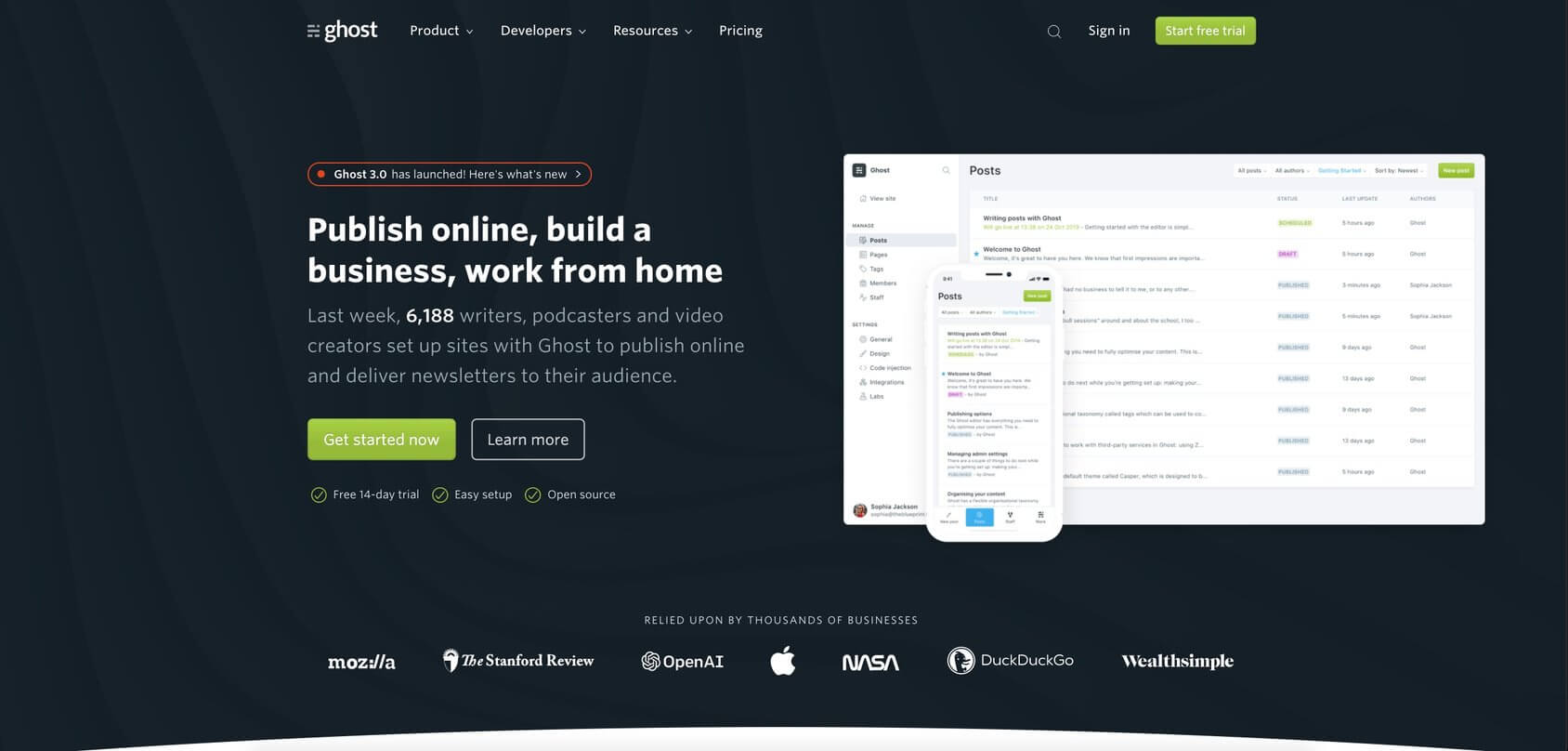
Ghost is an open-source blogging platform meant for journalists, editors, and writers. The product was launched in 2013 through a successful Kickstarter campaign (and it’s a good alternative to the best blogging platform – WordPress)
You can be in control of the design of your blog and the kind of experience you want to create for your readers. There are absolutely no rules when it comes to this tool – no limits on customizations or social media restrictions. Sign up to get started and publish your content for a vast audience as you target readers through email newsletters and monetize your written pieces through Ghost’s premium plans.
You can benefit from a collection of publishing tools perfect for professionals who want complete control over their site. These tools allow you to code and add functionality to your blog using modern technology.
Also, Ghost is fully managed through state-of-the-art cloud management technology and offers comprehensive developer control. Let’s take a look at the pros and cons of the platform.
Key features
- Site editor – create and embed exciting media files and content.
- Content management – complete control over the content.
- Posts scheduling – create an editorial calendar to stay ahead of time.
- Powerful SEO tools – comprehensive SEO features for high rankings.
- Simple templates – use Handlebars stunning templates to build your blog.
- Automatic backups – never lose data with off-site location backups.
Plans and pricing
You can start using the platform for free and select one of the three paid plans after:
Free trial
- Get a 14-day trial period
Basic plan
- $29.00 per month
1-year plan billed as one payment of $348.00
Standard plan
- $79.00 per month
1-year plan billed as one payment of $948.00
Business plan
- $199.00 per month
1-year plan billed as one payment of $2388.00
Postach.io — Blogging powered by Evernote
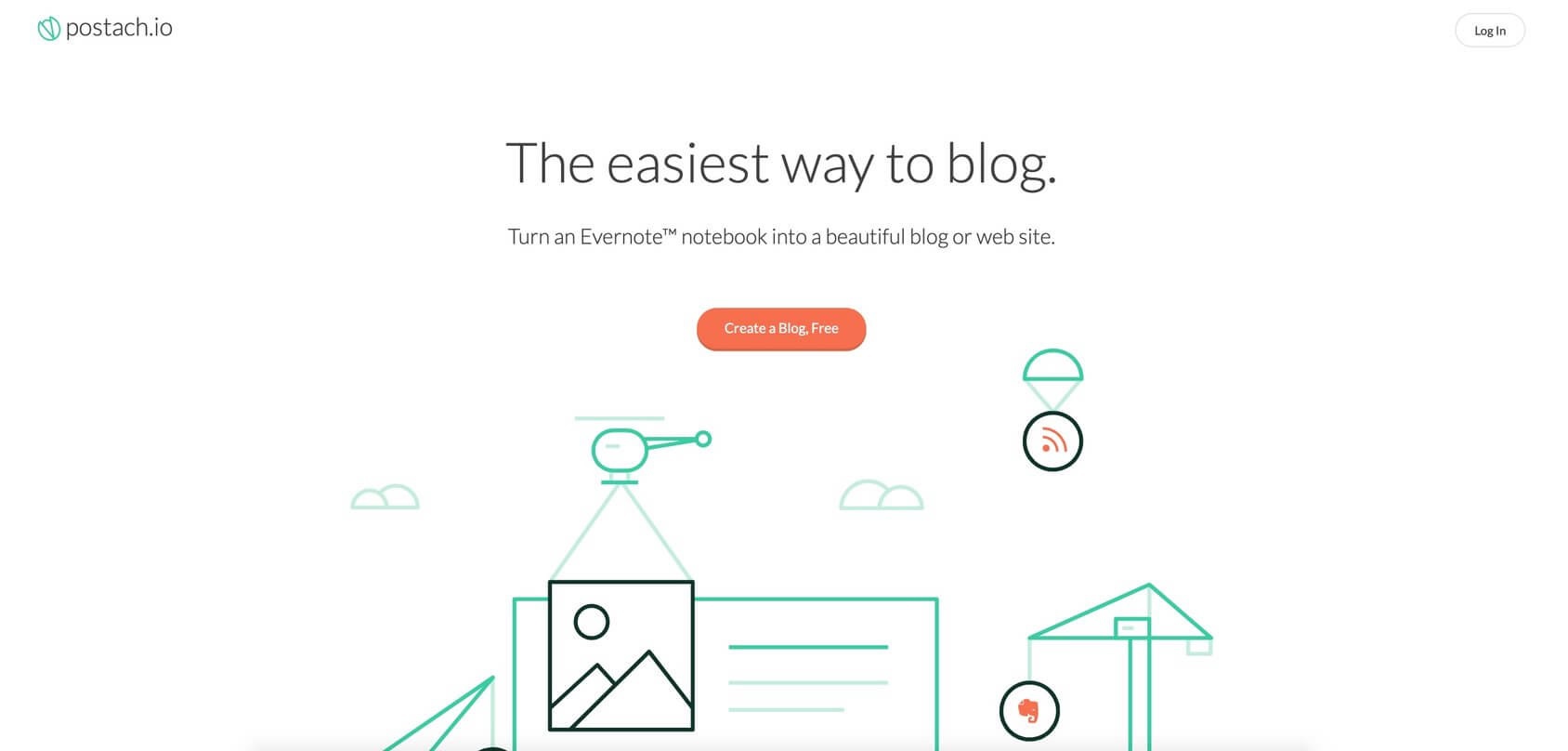
Postach.io is a blogging platform powered by Evernote, and it enables you to convert your notes into blogs.
To sign up with Postach.io, you need to register a new account, or use an existing Evernote account. You’ll need to install Evernote and then integrate it with Postach.io to connect your notes. It is a convenient way to enter the blogosphere. Users are able to use the dashboard to personalize their blogging website according to their taste and write blogs on the go with Evernote.
You can set up a free blog with this software, but if you want a custom domain, subscribe to a paid package. Postach.io also offers a collection of free and premium themes to help you create a visually appealing blog.
Key features
- Add images – insert pictures to engage your readers.
- Evernote sync – integrate notebooks with Postach.io.
- Site editor – customize your blog site through a robust dashboard.
- Custom domains – optimize your site with a paid custom domain.
- Visual content – insert a logo or avatar to personalize your blog.
Plans and pricing
Postach.io is available in four plans:
Free version
- Create a free blog with no credit card required.
1-5 sites plan
- $5.00 per month
or $50.00 per year
6-20 sites plan
- $15.00 per month
or $150.00 per year
21-50 sites plan
- $25.00 per month
or $250.00 per year
Weebly.com — Plain drag and drop builder functions
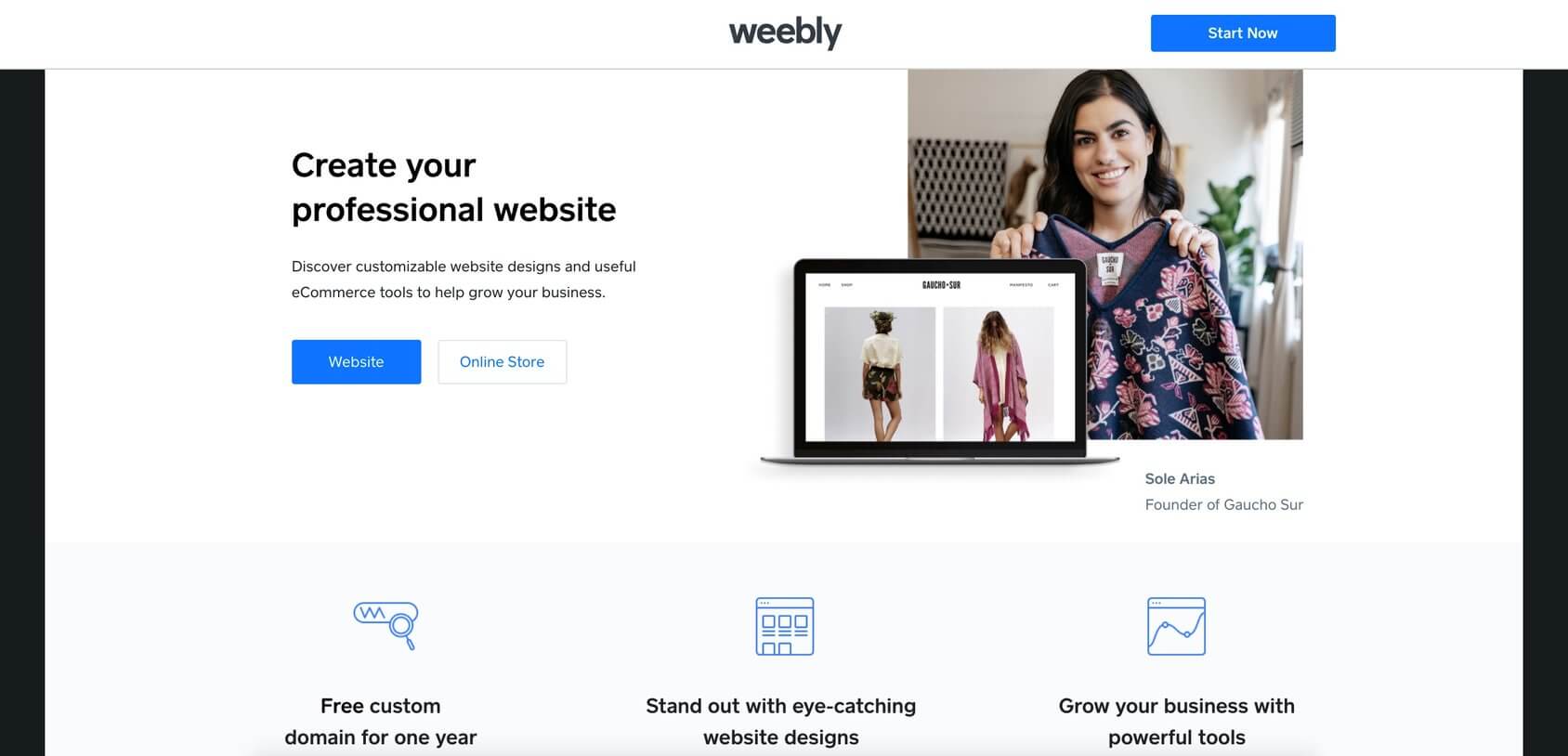
Weebly is a simple yet powerful website builder with a blog setup option available via an easy drag and drop editor.
In 2018 Weebly was acquired by Square, a mobile payment company. This change is a sign that their focus is mainly around websites, particularly eCommerce and small business sites. However, the platform offers blogging services, and anyone can try it for free.
Weebly gives you complete freedom to build your blog using beautiful themes with builder functionality. There’s also a free built-in hosting provider that ensures fast loading time for your website. All in all, the Weebly platform gives the right tools that work in combination with powerful features to create a blog in minutes.
Key features
- Drag and drop website builder – create your blog with powerful tools.
- Media management – gather images and create your galleries.
- Free personalized templates – alterable professionally designed templates.
- Search engine optimization – SEO tools to rank your website.
- App collection – multiple apps and third-party integrations that add functionality.
- Social media sharing – RSS integration to share content on social networks.
Plans and pricing
Weebly service is available in the following plans – Free, Connect, Pro, and Business:
Free version
- With the Weebly subdomain and branding
Use it for free with the Weebly subdomain and branding.
Connect plan
- $5.00 per month
1-year plan billed as one payment of $60.00
Pro plan
- $12.00 per month
1-year plan billed as one payment of $144.00
Business plan
- $25.00 per month
(1-year plan billed as one payment of $300.00
TypePad.com — Best for businesses and journalists
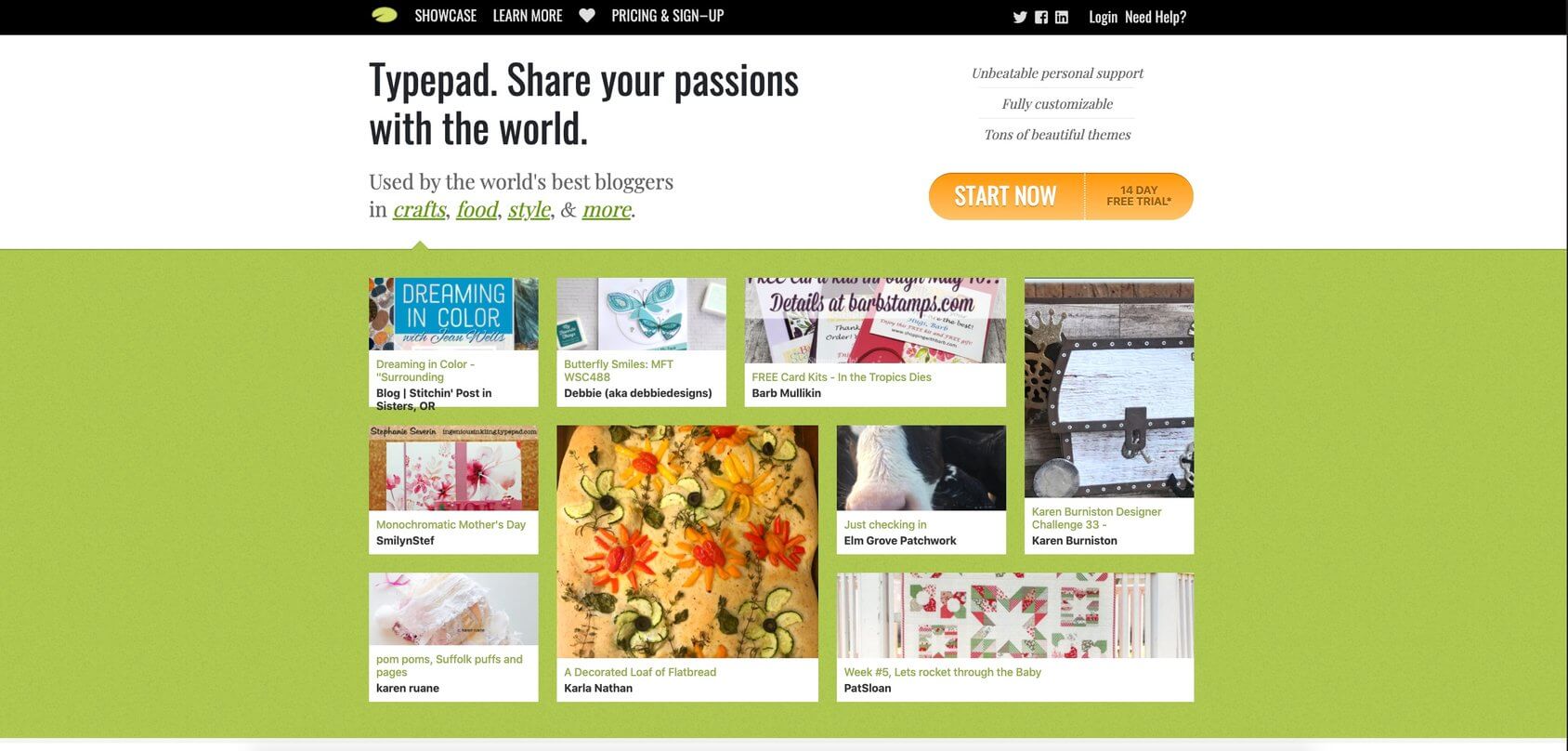
Note: When I last checked their site (on Jan 5, 2021), I saw a popup message – “Typepad is currently not accepting new signups. New customers are encouraged to check out our partner, Bluehost.”
TypePad is a blogging platform that was launched in 2003. It has a simple and user-friendly interface and offers exceptional customer support.
I don’t know of many successful blogs that are running on this platform. However, one that comes to mind is a blog by Seth Godin. Seth used to run it with the subdomain sethgodin.typepad.com (archive link) but some time ago changed it to the custom domain seths.blog.
TypePad offers various design tools that breathe life into your blogs so that you can captivate your readers visually. It’s your choice to monetize with ads and services or not. Additionally, you don’t need to worry about any technicalities with this software as it is fully hosted.
Key features
- Flexible publishing – write and publish from any device.
- Google Analytics integration – analyze your audience engagement.
- Theme builder – build your site’s theme from scratch.
- Stunning templates – select beautiful themes and make them even better with design tools.
- Built-in tools – get noticed through social networks and search engine rankings.
Plans and pricing
TypePad service comes with a free to use period and four different plans – Plus, Unlimited, Premium, and Enterprise:
Free trial
- Use the service with a 14-day trial period
Plus plan
- $8.95 per month
billed month to month
Unlimited plan
- $14.95 per month
billed month to month
Premium plan
- $29.95 per month
billed month to month
Enterprise plan
- $49.95 per month
billed month to month
How to choose the best blogging platform
Now that you know about all of the options available to you, it’s time to finalize the perfect blog management tool for your needs.
Assess your options against the following checklist:
- Value for your money – ensure that your chosen service is going to deliver precisely what you need. This means easy-to-use blog software, with all of the bells and whistles you need for success.
- Types of solutions available – explore the different solutions that are designed to support you, the blogger. Use these to build a truly unique blog. Options typically include free blog sites, self-hosted platforms, and premium blog site builders.
- Ease of use – some platforms offer quite the learning curve that can discourage new bloggers. You need a simple building tool that doesn’t require any technical skills, design, or marketing expertise.
- Features – you might not need all of the features at the start, but make sure that the best blog platform of your choice lets you customize or modify your website if needed. If you would like some third-party tools to be integrated, check if they are available.
- Blog management – if needed, you’ll have to access the back-end or admin area to update your blog, make any changes, and fix the layout. It is crucial to make sure that this area is available, manageable, and easy-to-navigate.
- Rules and restrictions – before you pay for software, read through the ‘Terms of Usage’ so that you can be sure that you aren’t breaking any rules with the way that you’ll be using it.
This information should be sufficient for you to research and locate the best blogging site for your needs.
Types of blogging platforms
One of the most widely used best blogging platforms and self-hosted CMS (Content Management System) is WordPress.org. It’s recommended by a majority of blogging experts.
This system has emerged as the clear winner for professionals because:
- It takes care of all tasks related to setting up and sustaining your blog.
- The integrated dashboard can make and finalize updates with a click.
- It offers comprehensive customizations and support for blog design and functionality.
While WordPress.org is our top recommendation, if you are wondering about how to set up your new blog, there are several other options as well.
For example, you can consider the following blog sites:
- Free blogging sites (hosted): If you opt for this option, your blog’s address will look like this: domainname.sitename.com. The most significant advantage is that it’s free, but the shortcoming is that you’ll have to follow their rules. Besides, a name with a subdomain can make you look like an amateur.
- Freemium/premium options: If you become interested in a freemium/premium solution, you can experience it in all its glory during a free trial period. If you like it and choose to continue using it, you’ll have to start paying (up to $30 per month).
- Self-hosted blogs: Select this option if you want to host your blog site on your domain and name it however you want. You’ll have to follow some rules set in place by your domain registrar and hosting company, but other than that, you are your own boss. You’ll be fully responsible for the site and its contents. The Self-Hosted CMS is free as well.
- Website builders: These tools let you create simple blogs thanks to their drag-and-drop interface. Take advantage of the WYSIWYG (what you see is what you get) facilities when you use a website builder.
How WordPress compares to other websites for blogging
As explained earlier, WordPress is the absolute best in its class. WordPress is actually home to 42% of websites on the internet, proof that its self-hosted version is very popular.
I’ve already written another guide wherein I compare WordPress with other leading CMS’ so we won’t go into those details here. If you’d like to read these in-depth comparisons, here are the links:
- WordPress.org vs. WordPress.com
- WordPress vs. Blogger.com
- WordPress vs. Tumblr
- WordPress vs. Wix
- WordPress vs. SqaureSpace
These other platforms have their own unique audience as well because they are great for beginners who want to make a blog. But if you want a solid foundation for your blog, nothing beats the self-hosted WordPress.
Moving your blog across platforms
If you’ve already started your blog with another platform, but then decided to move to WordPress, it is possible to do without any downtime. The ‘Import Tool’ with WordPress takes care of it for you.
Go to the WordPress Dashboard and head to the Tools section. Here you’ll find these options to help you import from other solutions:
- Blogger – import posts, comments, and users from a Blogger blog. Read our step by step guide on How To Move Your Blog From Blogger To WordPress.
- WordPress.com – import posts, pages, comments, custom fields, categories, and tags from a WordPress export file. Read our step by step guide on How To Move Your Blog From WordPress.com To WordPress.org.
- Tumblr – import posts and media from Tumblr. Read our step by step guide on How To Move Your Blog From Tumblr To WordPress.
- Wix – import posts and media from Wix. Read our step by step guide on How To Move Your Blog From Wix To WordPress.
- Weebly – import posts and media from Weebly. Read our step by step guide on How To Move Your Blog From Weebly To WordPress.
- Squarespace – import posts and media from SquareSpace. Read our step by step guide on How To Move Your Blog From Squarespace To WordPress.
- LiveJournal – import posts from LiveJournal. Read our step by step guide on How To Move Your Blog From LiveJournal To WordPress.
- Movable Type and TypePad – import posts and comments from a Movable Type or TypePad blog. Read our step by step guide on How To Move Your Blog From Movable Type And TypePad To WordPress.
It is important to remember that WordPress plugins offer other import options as well – try searching the official plugins repository for an importer tool that works for you.
FAQs
Conclusion
The most reliable way to find the best blogging platform for your needs is to understand how free blogging sites and self-hosted WordPress function. Also, your choice will depend on your budget, customization abilities, and ease of use of the software you want to use.
Through this guide, I have informed you of all the features (pros and cons), and the pricing range of the best blog sites. And now you know how to get started with each of them.
So which one will you choose?
| blogging the boys | |
| blogging sites | |
| blogging for beginners | |
| blogging platforms | |
| blogging websites | |
| bloggingheads | |
| blogging meaning | |
| blogging apps | |
| blogging as a side hustle | |
| blogging anonymously | |
| blogging as a career | |
| blogging and making money | |
| blogging as a business | |
| blogging about mental health | |
| blogging and vlogging | |
| blogging business | |
| blogging boys | |
| blogging bayport | |
| blogging basics | |
| blogging business ideas | |
| blogging best practices | |
| blogging books | |
| blogging babies and the bayou | |
| vlogging camera | |
| blogging course | |
| blogging classes | |
| blogging classes near me | |
| blogging conferences 2022 | |
| blogging coach | |
| vlogging camera with flip screen | |
| blogging companies | |
| blogging definition | |
| blogging dirty | |
| blogging dog center | |
| blogging def | |
| blogging definition and example | |
| blogging define | |
| blogging dog products | |
| blogging disk | |
| blogging examples | |
| blogging equipment | |
| blogging etiquette | |
| blogging events | |
| blogging earning | |
| blogging explained | |
| blogging essentials | |
| blogging ethics | |
| blogging for beginners | |
| blogging for money | |
| blogging for dummies | |
| blogging for dummies 2021 | |
| blogging for kids | |
| blogging for free | |
| blogging for business |


